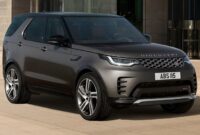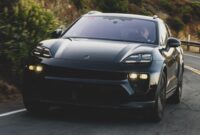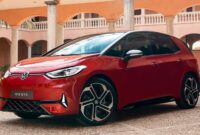The fifth-generation Land Rover Range Rover will debut in October 2021. Based on Jaguar Land Rover’s MLA-Flex platform, this SUV is a luxury cruiser with five- and seven-seat versions available, as well as a new plug-in hybrid. powertrain. It was never designed with speed and agility in mind, and this easily explains its relatively poor results in moose tests.
Our colleagues at km77.com put the Range Rover version of the P440e through the famous moose test recently. This is a less powerful plug-in hybrid variant, which has a turbocharged 3.0-liter engine under the hood powered by an electric motor. The combined output of this system is 434 horsepower (324 kilowatts) and 457 pound-feet (620 Newton-meters) of torque. The massive 38.2 kilowatt-hour battery pack provides an all-electric range of over 62 miles (100 kilometers) on a single charge.

13 Photo
This particular example of an SUV uses Pirelli Scorpion Zero all-season tires measuring 285/45 R22. It’s certainly not the most gripping rubber for heavy family haulers we can think of and this may have had a negative impact on moose test results.
The first attempt at 47 miles per hour (76 kilometers per hour) ended quickly in a spectacular loss of traction for the Range Rover and it was clear that the maximum maneuverable speed was much lower. Vehicle weight is obviously a big factory here, but its ultra-aggressive electronic stability system also makes it impossible for the SUV to get past the cones.
After several failed attempts again, km77.com the team eventually made it through the drill without hitting any cones at just 39 mph (63 kph). At these speeds, understeer is less noticeable and overall, the SUV feels stable and fully maneuverable. Even at this speed, the ESC acts very intensively and reduces the speed of the front wheels.



